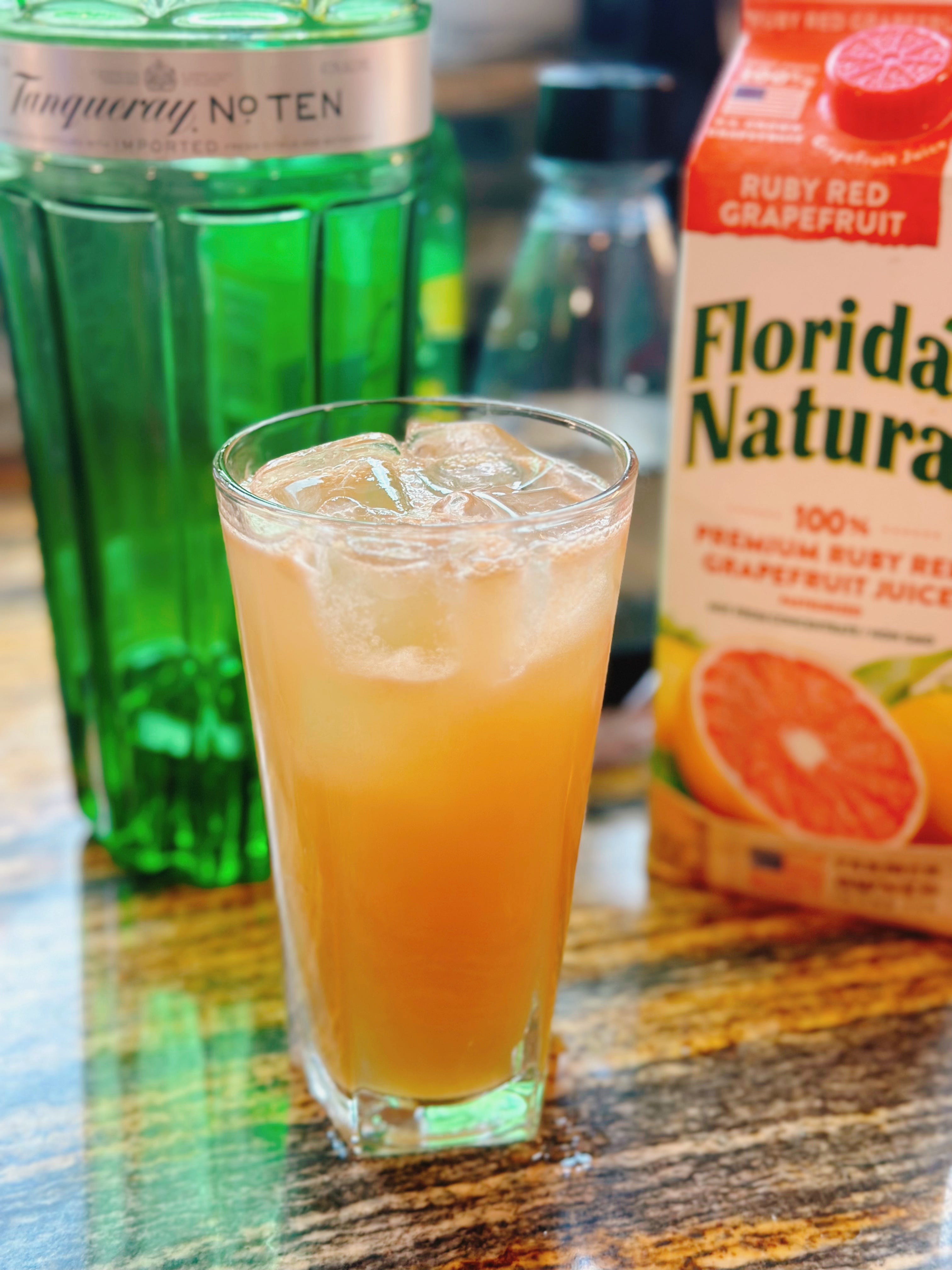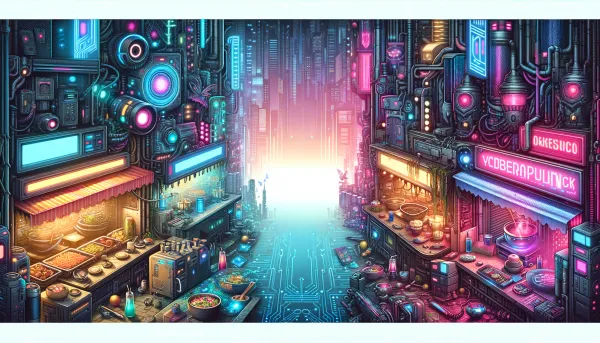From bittersweet to rotten: Twitter as you knew it is dead
First they came for the Verified Blue Checks. Then they came for the software developers. Then the journalists left. Then they came for everyone else.
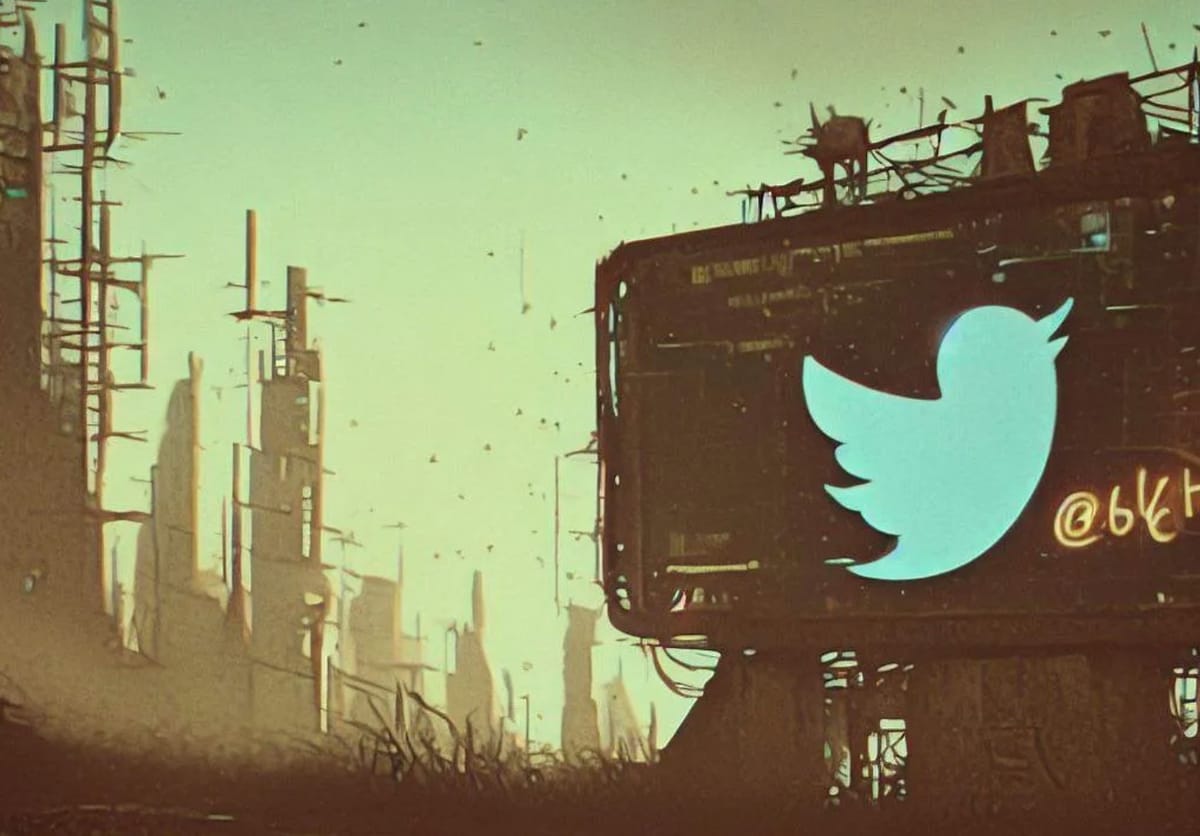
If you’ve subscribed to this newsletter and blog, you know it uses the Substack platform. Many independent writers, such as myself, use it because it has no upfront fees — if you have no intention of monetizing your posts, then it’s free. If you decide to charge for your content, it handles all the subscription management and billing details. It also notifies readers over email (and app) when a new post is issued and does all social media promotion of your posts for you directly to Twitter.
It works very well as an all-in-one content management platform for writers looking to expand their audience reach.
This week, Twitter (or Elon Musk) went to war with Substack, blocking clicks to links that led to Substack blog posts and preventing users from retweeting and replying to content containing Substack links. Why? Because Elon Musk believes this small tech startup is building a Twitter clone using their newly announced “Notes” feature — a gross exaggeration. We’ll get back to this in a bit.
Schrodinger’s Blue Check
Last week, I wrote about how the Blue Check/Legacy Verified situation deteriorated when the April 1 deadline was met. There is also a second April 15 deadline for how unpaid accounts will lose their algorithmic post rankings, but we don’t know if Twitter/Musk will actually go through with it for Legacy Verified users that won’t pay up.
So far, only a few Twitter accounts that have publicly announced that they refuse to pay for Blue — such as the New York Times — have had their legacy checkmarks removed. For a few days after April 1, Twitter had an ambiguous description for Verified accounts, which looked like this:
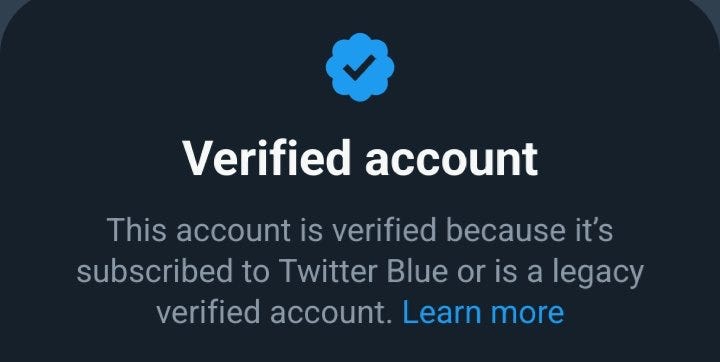
This murky designation was ridiculed as now there was no way to distinguish between someone who has paid for their account versus someone who is a notable media or entertainment figure. As of this writing, on Sunday, April 9, my own Twitter profile and that of many other Legacy Verified accounts have a different message:
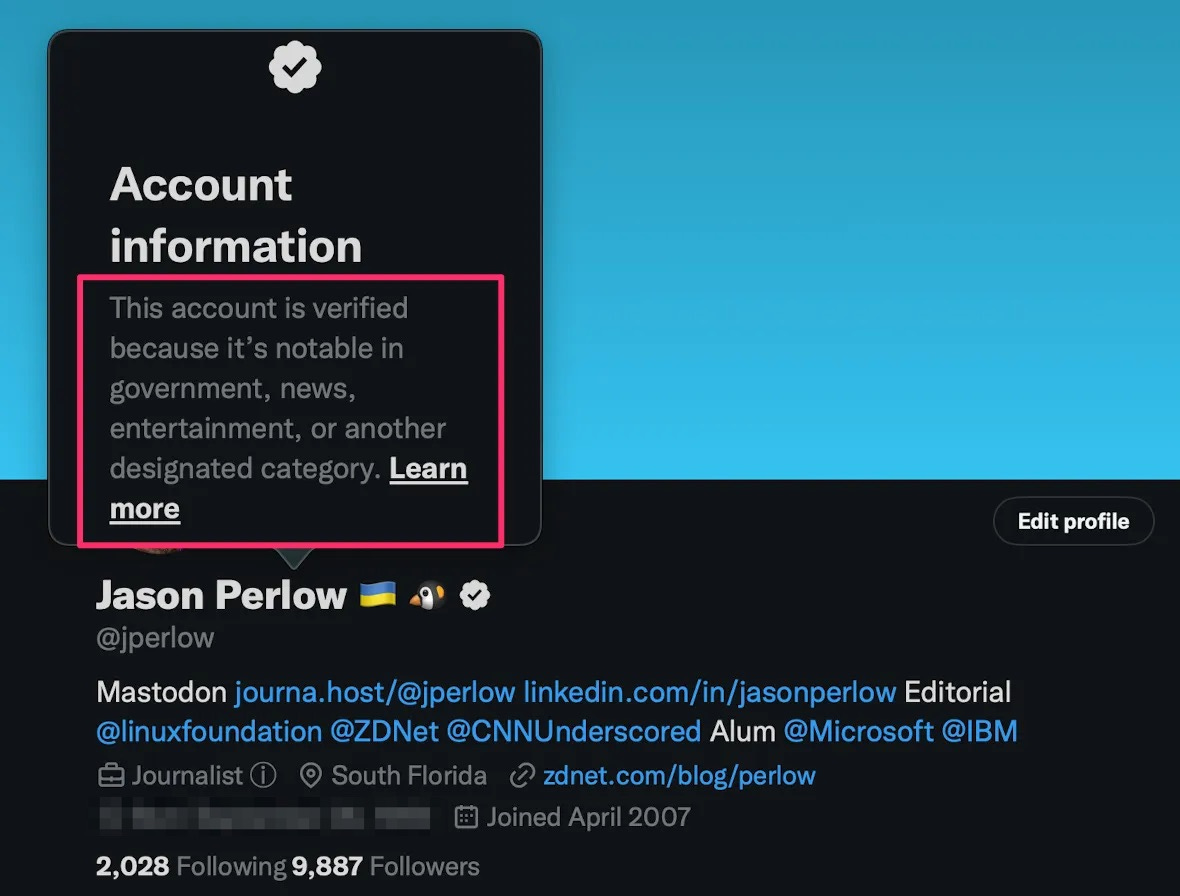
So it seems Elon has now backed off from stripping most of his highest-profile users from this unpaid privilege, at least for now, or unless you make an enemy of him and he removes your check just for spite, which appears to be how he is going about things.
There are/were only about 420,000 Legacy Verified accounts across the entire platform of 237 Million daily active users (DAU), which amounts to less than .2 percent of the user base. So it’s a tiny group of people to make such a massive fuss over, especially when you consider that at $84 a year for each potential Twitter Blue subscription, you’re talking only about $37.8M of potential total revenue if all of these people pay up.
Oh, and the total number of people currently paying for Twitter Blue? Also estimated to be only about 290K people. So $24M in annual revenue total from these users.
That’s nothing if you consider that the ad spend of a major advertiser might be in the millions each per year or hundreds of thousands of dollars per day, and the company’s debt is over $13 Billion.
The potential revenue of all the Legacy Verified accounts is a proverbial piss in the ocean compared to Twitter’s advertising revenue stream. Angering these people (who are bringing a lot of eyeballs to the platform) and the brands behind them has considerable downsides — over 50 percent of major advertisers have left Twitter since Musk’s takeover of the company.
Why have they left? It probably has something to do with potential brand risk, considering that Musk has now re-empowered white supremacists, Nazis, and other horrible people whose (previously banned) accounts have now been reactivated and highlighted with the latest Twitter algorithm, especially if they are Blue users. And you can forget about ongoing moderation on this platform, considering that Musk has fired over 80 percent of the company’s employees.
Adding API gasoline to the fire
So yeah, giving power to legitimately horrible people has caused all the big advertisers to pause ad spend. But now let’s get back to the Substack thing. Elon is concerned that this startup is building a competing platform and, in doing so, “attempted to download a massive portion of the Twitter database.”
So how exactly does one do that? One way to do that would be to aggressively “web scrape,” causing a large amount of traffic egress, which could be perceived as a denial of service (DOS), and the company would be within its rights to block them outright. But that would only allow you to copy posts and Twitter user profile information; it wouldn’t give you deeper insights into the data.
Elon didn’t say it was a DOS attack, nor did he say it was web scraping. He said, “download the database.”
But you can’t have programmatic access to the database for nothing; in other words, make Application Programming Interface (API) queries against it unless you are a paying Twitter API customer, which Substack is.
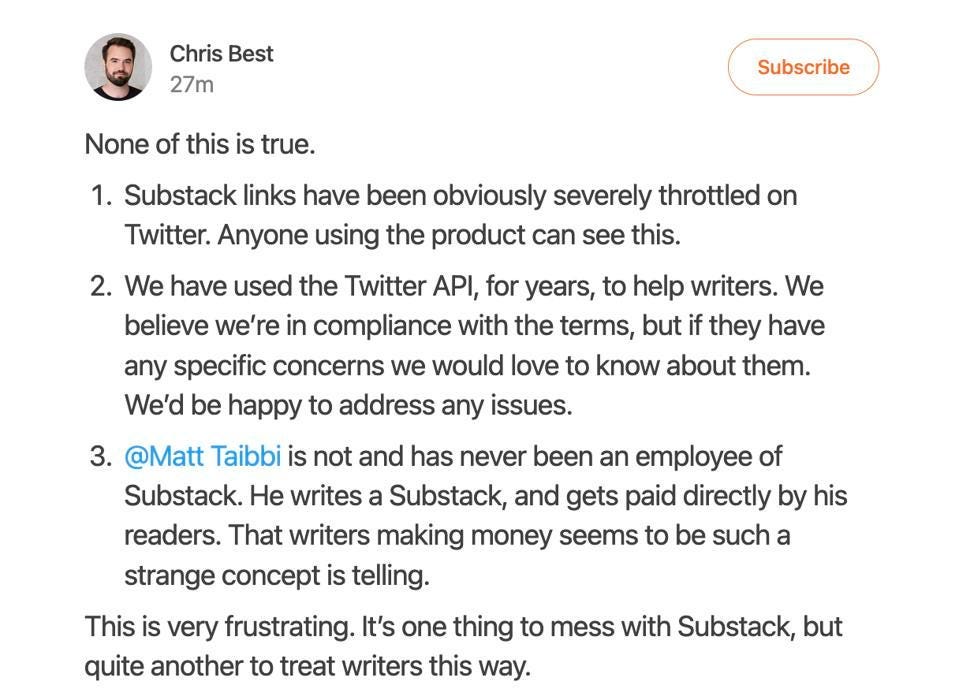
About a week ago, Twitter changed its pricing on accessing its database. These pricing changes make access prohibitively expensive to researchers, one-man shops, and small companies. For $100 monthly, with basic tier, you can only make 50,000 post and 10,000 read requests. You need enterprise access for anything bigger than that, which costs $42,000 monthly.
Considering the number of potential customers Twitter has for API connectivity, it's a laughably high fee to pay and has a chilling effect on its ecosystem. So Substack cannot possibly, through basic tier API access (which it would need even to touch the database), download a “massive” portion of it; they wouldn’t get very far with only 10K reads per month. If they are paying for enterprise access, they’d be within their rights to make even larger numbers of queries.
Now it is entirely possible Substack was making large amounts of API queries before this pricing/tier change went into effect, but that would penalize the company for things it was previously allowed to do, aka ex post facto. It would also be singling them out.
So Musk is being liar, liar pants on fire (LLPOF) disingenuous with his statements.
So if you don’t pay for Twitter API access you are cut off as a software developer, but if you pay for Twitter API access and piss Elon off, you are also cut off. Okay, that makes sense. Not.
Edit: As of Sunday, April 9, Twitter has since unblocked Substack links and now permits users to like and retweet them but has filtered them out in search queries.
Twitter’s final days are upon us; head to Mastodon
This is not going to get any better from here. When you consider that the brands are fleeing the platform due to user safety concerns and brand risk from association with undesirable and flat-out bad actors, that major influencers that would otherwise attract viewers are being mistreated, and application/SaaS developers such as Substack that otherwise add value to the overall ecosystem are being strongarmed and blocked, the path forward for Twitter as an an-end user there doesn’t look promising.
It will not be a safe space because it cannot moderate its content and protect you from bad actors. Your favorite brands and media companies will leave. The top independent content producers you have otherwise enjoyed — such as ultra-conservative writers Matt Taibbi and Bari Weiss (ironically, both Elon loyalists and publishers of his Twitter Files exposes) now find themselves in the crossfire as high-profile Substack users and are looking to flee the platform. The world’s tiniest violin plays.

Do you write content using a competing platform or part of a media site Elon finds objectionable or critical of his regime? Your content will be blocked, or you’ll be labeled negatively, such as NPR was last week.
I can’t say how long this decline or end-game will take. With no path to profitability, it could take months or even years. It may hang on to life as an Internet zombie service, on minimal life support, for as long as Elon Musk wants to throw money at it and morphs it into whatever reduced capacity service infected by horrible people it ends up evolving into. But it's over for the veteran Twitter user who once enjoyed this social media platform's free-wheeling, informative, and fun space to engage in.
Was it perfect before Elon Musk? No, it had its issues under Jack Dorsey (twice), Dick Costolo, Evan Willians, and Parag Agarwal. But it’s now a fetid, acrid shell of its former self.
So what to do then? Join a Mastodon server. Is it as easy to use as Twitter is currently? No, the web interface and the Mastodon apps are in their infancy. However, significant advancements have been made in recent months, such as releasing the Tapbots Ivory client for iOS, a clone of the popular TweetBot Twitter client (which no longer works because Musk cut off all the independent Twitter clients from using the API). It’s a smaller, evolving platform, with about 10 million users to its name currently. But the engagements are high value, and it feels like Twitter was when it first started, back in 2007, when I first joined the platform. I suggest that you give it a try.
Bittersweet memories
I have been a Twitter user since its inception in 2007, with many memorable years on the platform. It had its good times; it had its bad times. So seeing it go down this way feels bitter — time for a drink.
A delicious bittersweet cocktail is the Tom Collins, a classic from the 1870s. This version uses not just lemon juice but also grapefruit juice, which adds something extra.
Grapefruit Collins
- 2oz Gin
- 3/4 Ounce Simple Syrup (or Agave Syrup)
- 3/4 Ounce Lemon Juice
- 1oz Grapefruit Juice
- Club soda or Seltzer Water
Combine all ingredients in a shaker except soda and grapefruit juice, and shake vigorously with ice. Strain into a tall glass with ice, and top with grapefruit juice and seltzer. Stir contents to incorporate.
